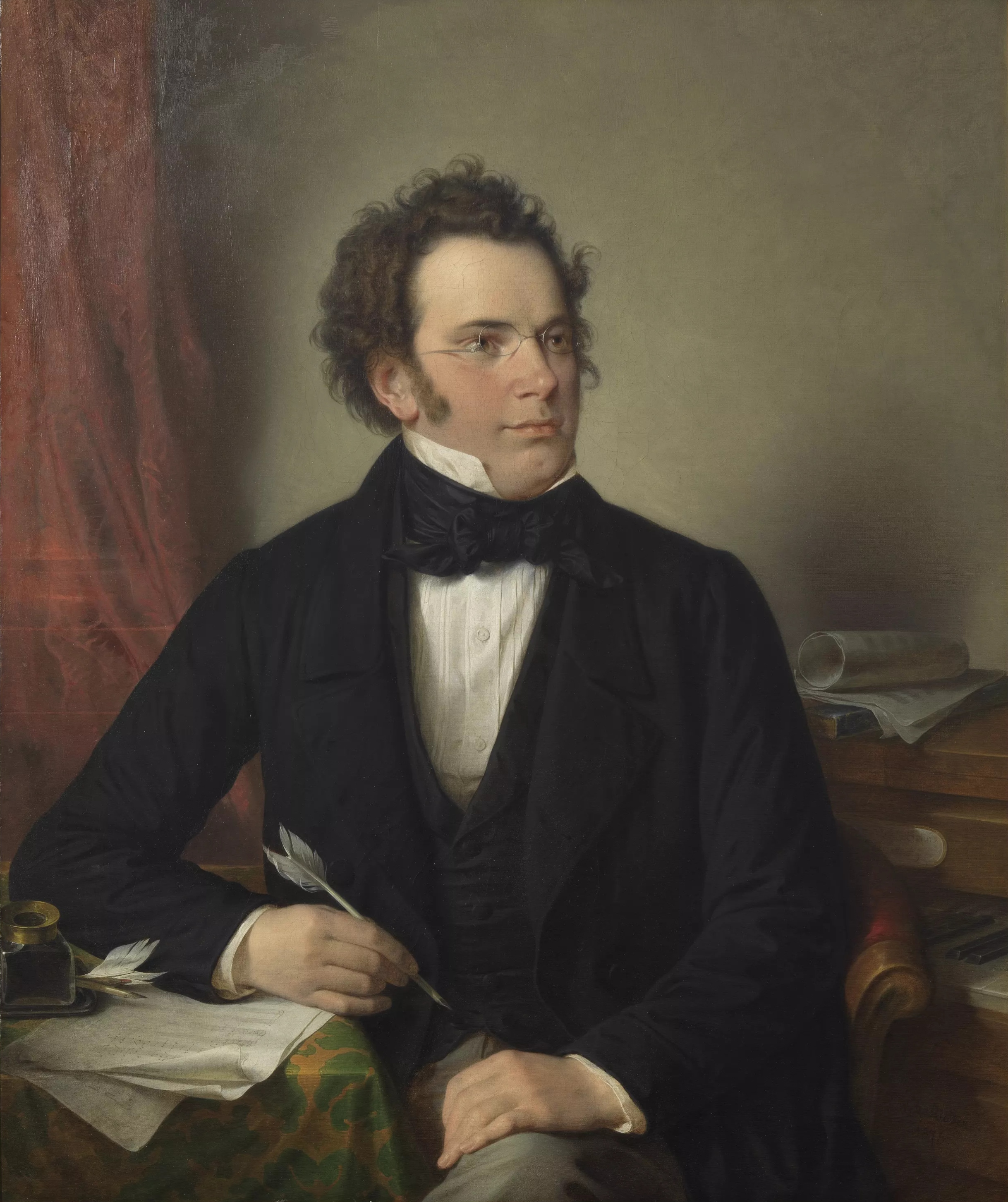Franz Schubert
(1797~1828/오스트리아)
Piano Trio no. 2 in E flat major, op. 100 (D. 929)
Zhang Zhang - Violin, Paul Katz - Cello, Georgi Slavchev - Piano.
Performed in Duncan Hall, Shepherd School of Music, Rice University
encyclopedia
The Trio No. 2 in E-flat major for piano, violin, and violoncello, D. 929, was one of the last compositions completed by Franz Schubert, dated November 1827. It was published by Probst as opus
100 in late 1828, shortly before the composer's death and first performed at a private party in January 1828 to celebrate the engagement of Schubert's school-friend Josef von Spaun. The Trio was among the few of his late compositions Schubert heard performed before his death.[1] It was given its first private performance by Carl Maria von Bocklet on the piano, Ignaz Schuppanzigh playing the violin, and Josef Linke playing cello.
Like Schubert's other piano trio, this is a comparatively larger work than most piano trios of the time, taking almost 50 minutes to perform. The second theme of the first movement is based loosely on the opening theme of the Minuet and Trio of Schubert's G major sonata (D. 894).
The main theme of the second movement was used as one of the central musical themes in Stanley Kubrick's 1975 film Barry Lyndon. It has also been used in a number of other films, including The Hunger, Crimson Tide, The Piano Teacher, L'Homme de sa vie, Land of the Blind, the HBO miniseries John Adams and The Mechanic. It is supposedly based on a Swedish folk song "se solen sjunker" ("See, the sun is sinking") by Isak Albert Berg.
Kyung-Wha Chung, violin; Kevin Kenner, piano; Sung-Won Yang, cello
Structure
The piano trio contains four movements:
1. Allegro
대담하고 극적인 1악장 도입부 역시 베토벤의 음악을 닮았습니다. 피아노와 바이올린, 첼로가 다 같이 한 목소리가 되어 선언적인 주제를 연주하는 방식은 베토벤이 그의 현악4중주곡에서 종종 쓰던 충격적인 도입 방식입니다. 하지만 이 작품에서 가장 영향력이 있는 선율은 슈베르트다운 신비함이 담긴 제2주제일 것입니다
The first movement is in sonata form. There is disagreement over the break-up of thematic material with one source claiming six separate units of thematic material while another source divides them into three themes each with two periods. There is to an extent extra thematic material during the recapitulation. At least one of the thematic units is based closely on a theme in an earlier piano sonata. The development section focuses mainly on the final theme of the exposition.
2. Andante con moto
미묘한 색채감을 뿜어내는 단조 화음을 바탕으로 반복되는 리듬 패턴은 우수를 자아냅니다. 작품 전체의 핵심이라 할만한 2악장의 주제 선율은 스웨덴 민요로부터 온 것이라고 합니다. 스웨덴에서 온 젊은 테너 가수인 이자크 알베르트 베르크가 1827년에 비엔나를 방문했을 때 [날이 저문다]라는 스웨덴 민요를 노래했는데, 당시 슈베르트도 베르크의 노래를 들었고 이 노래의 반복되는 피아노 반주 음형에서 아이디어를 얻은 슈베르트는 이를 2악장에 도입해 지극히 매혹적인 주제를 완성했다고 합니다.
The second movement takes the form of an asymmetrical-double-ternary form. The opening theme has been used extensively in popular culture.
3. Scherzando. Allegro moderato
명상적인 2악장이 조용히 마무리되면 3악장의 사랑스런 캐논으로 이어집니다. 캐논이란 한 성부가 주제 성부를 몇 마디 뒤에서 똑같이 모방하는 방식으로 전개되는 음악으로, 일종의 돌림노래와 같습니다. 피아노의 뒤를 바짝 뒤쫓는 현악기들의 추격과 가볍고 명랑한 분위기는 하이든의 음악을 닮았습니다.
The scherzo is an animated piece in standard double ternary form.
4. Allegro moderato
마지막 4악장은 처음의 주제가 계속 반복되는 론도 형식의 음악으로, 여러 가지 음악이 론도 주제 사이사이에 끼어들며 다채롭게 전개되고 있어 연주 시간도 꽤 긴 편입니다. 그런 까닭인지 라이프치히에서 이 작품이 출판될 당시 4악장 중 99마디가 생략된 채 출판되기도 했다고 합니다. 빠르고 화려하게 진행되는 4악장 중간 부분에 2악장의 주제가 회상되며 시적인 분위기로 변화하는 순간은 이 곡에서 가장 특별한 부분이며, 마지막에 2악장의 주제가 벅찬 장조로 마무리되는 여정 또한 매우 드라마틱한 감흥을 전해줍니다.
The finale is in an uncommon form where Schubert layers the sonata form with the outline of rondo form. Schubert also includes in two interludes the opening theme of the second movement in an altered version.
작곡가이자 음악평론가인 슈만 역시 이 작품을 가리켜 “세계 음악계에 혜성같이 나타난 작품”이라 칭하며 이 작품이 먼저 작곡된 [피아노3중주 D.898]에 비해 좀 더 드라마틱하고 남성적인 힘으로 가득 차 있다고 평했다고 합니다.슈베르트는 [피아노 3중주
D.929]를 1827년 11월에 완성한 것으로 알려져 있으나 초연 날짜에 대해서는 [피아노 3중주 D.898]과 함께 1827년 12월 26일 빈 악우협회에서 이루어졌다는 설과 1828년 3월의 슈베르트 작품발표회에서 처음 이루어졌다는 설이 있습니다.
'♣ 음악 감상실 ♣ > (피아노 3중주)' 카테고리의 다른 글
| Carl Czerny - Piano Trios Nos 2번, 4번 (0) | 2015.06.07 |
|---|---|
| Schubert - Piano Trio "Sonate" D28 in B Flat Major (0) | 2015.06.03 |
| Beethoven - Piano Trio op.1 no1. 2. 3 (0) | 2015.05.12 |
| Schumann - Piano Trio No. 3 in G minor, Op. 110 (0) | 2015.05.02 |
| Robert Schumann - Piano Trio No. 2 in F major, Op. 80 (0) | 2015.05.01 |


